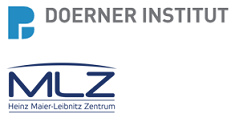Speaker
Description
Advancing knowledge on the interactions occurring between conservation treatments and Cultural Heritage (CH) materials is a key point to plan effective conservation strategies. When dealing with inorganic-mineral products, the study of their diffusion within CH stone materials faces several analytical challenges, as non-destructive approaches, qualitative/quantitative phase analysis and high spatial resolution are simultaneously required.
Synchrotron radiation (SR) X-ray based 2D/3D/4D techniques have been recently used to successfully study the interaction of inorganic treatments, such as ammonium oxalate and ammonium phosphate (AmOx and DAP, respectively), with sedimentary stones of CH (i.e. micro X-ray powder diffraction in transmittance geometry (μ-TXRD) [2], micro-computed tomography (μCT) [2,3], micro-diffraction tomography (XRDCT) [4]). On the other side, a lot is still unknown on i) their reaction with artificial layered stone materials of CH as well as on ii) the crystallisation of newly-formed phases within or below the carbonatic painted layers.
This research shows the novel application of an advanced approach based on SR 2D X-ray based mapping techniques to characterize the effects induced by inorganic treatments (both AmOx and DAP) applied with different treatment modalities (poultice, capillarity) to painted plasters and XV century frescoes.
The high potential of SR high-lateral resolution 2D XRPD-XRF mapping has been applied to explore the: (i) AmOx and DAP reaction with Ca-rich and Mg-rich regions of carbonatic substrates; (ii) composition and localization of crystalline phases newly formed within treated substrates and their phase variation with the penetration depth; (iii) possible interactions of inorganic treatments with pigments and chromophore compounds. These elemental and structural investigations were carried out at the EBS-ESRF thanks to the new access route provided by the Historical Materials block allocation group (BAG) to the scientific community of CH [5].
The high quality datasets showed the crystallochemical composition and spatial distribution of phases of interest (down to single μ-particles of multiphase systems) within complex and heterogeneous matrixes. Moreover, the multi-analytical mapping approach highlighted the growth of a crystalline framework restoring the microstructural cohesion of painted layers and provided new knowledge on the variables affecting the reaction of inorganic treatments with carbonatic layered substrates.
Above all, this study allows a deeper understanding of consolidating mechanisms within CH geomaterials as well as opens novel analytical perspectives to explore the possible interactions of inorganic treatments with other crystalline and amorphous phases formed by decay processes and other/past conservation treatments.
References
[1] E. Possenti et al., Analytical Methods 12 (2020) 1587-1594
[2] E. Possenti et al., Materials Characterization 154 (2019) 315–324
[3] G. Massinelli et al., Construction and Building Materials 397 (2023) 132348
[4] E. Possenti et al. iScience 25 (2022) 105112
[5] M. Cotte et al., Molecules 27 (2022) 1997

